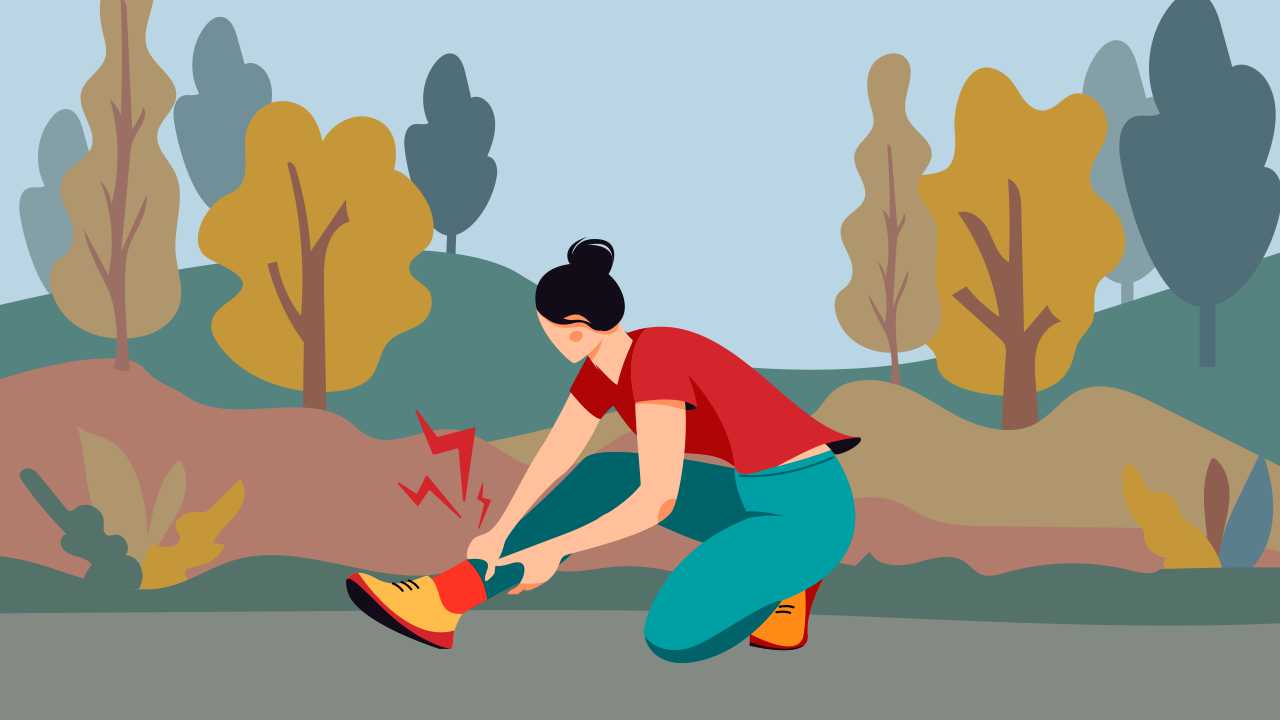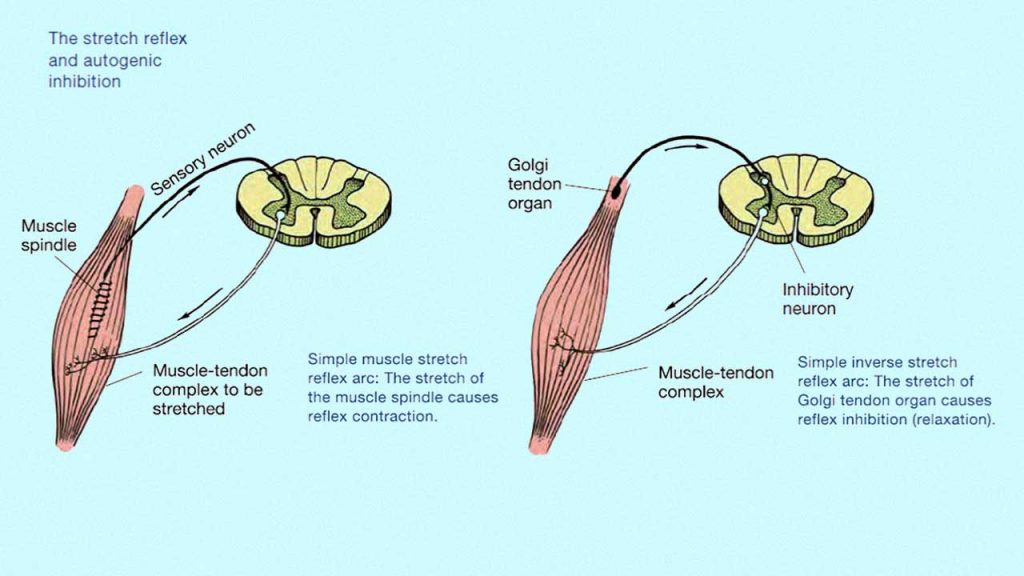
How to Prevent Cramping

Skeletal muscle cramps are a common affliction during and after exercise. It can even affect fit athletes. It is defined as an intense, involuntary, temporary, and painful contraction of the skeletal muscle. It can occur in several situations, and its cause is yet to be determined properly. Although cramps arise due to several medical conditions, our focus over here is on Exercise-Associated Muscle Cramps (EAMC).
Physiology of a cramp

The skeletal muscle contains special fibers within it known as muscle spindles. These fibers detect the extent to which the muscle is being stretched with the help of sensory nerve cells, called sensory neurons.
If the stretch is beyond certain limits, the sensory neuron sends out a signal to the spinal cord. Then, the spinal cord instructs other nerve cells, known as motor neurons, to contract the muscle fibers and prevent the muscle from being stretched.
Similarly, Golgi Tendon Organ (GTO), which is a sensory organ, lies near the junction of a muscle and a tendon (connective tissue, which attaches muscle to a bone). The function of GTO is to sense the extent to which the tendon is being stretched when the muscle contracts. If the stretch is too much, the GTO sends out an impulse via sensory neurons to the spinal cord, which again connects to a motor neuron on the same muscle and inhibits it from contracting. So, you can see that the muscle spindle and the GTO have opposite actions.
Causes of cramping
Although cramping is common in athletes, its exact cause is still unknown. Broadly, EAMC can be a result of muscle fatigue (neuromuscular theory) or exercising in hot and humid conditions (dehydration-electrolyte imbalance theory).
1. Muscle fatigue
To begin with, muscle fatigue caused due to inadequate conditioning or training, or by overstraining or overusing the muscle, may lead to localized cramping in the affected muscle. For instance, intense physical activity and repeated loading of the muscle while running a marathon may result in muscle strain and local fatigue. This can increase the excitation level of muscle spindles along with a decrease in the action of the GTO, which acts as an inhibitory mechanism. This will cause continuous and sustained muscle contractions, as the GTO is no longer counteracting the excitation of the muscle spindle.
Fatigue-related muscle cramping affects older athletes. It also impacts people who have poor stretching habits, insufficient conditioning, metabolic disturbances, and history of cramps.
Also Read: Overtraining: Symptoms and Recovery
2. Dehydration and electrolyte depletion
The second category of EAMC is caused by a loss of excessive electrolytes due to profuse sweating. During prolonged physical activity, most notably in endurance races, there is an inadequate replacement of sodium lost through sweat. As a result of excessive sweating, you may experience a loss of plasma volume/ fluid. There are two spaces, wherein the fluid is stored in the cells. These are the spaces inside (intracellular space) and outside (extracellular space) the cells. There is a loss of water because of excessive sweating.
So, to compensate for this, the water moves from the extracellular space to the intracellular space to maintain the electrolyte concentration of the cells. Due to this, there is a shrinking in the extracellular space, which increases the concentration of extracellular constituents, such as metabolites and electrolytes. This kind of rise beyond normal values of electrolyte concentration can trigger nerves to fire, causing hyper-excitability and resulting in the onset of cramps. The most affected sites include the quadriceps, hamstring, and calf muscles.
Treatment of cramps
Make it a point to focus on increasing your fitness levels to avoid cramping from reoccurring. Without understanding what causes EAMCs, treatment options are limited, but there are some immediate actions that you can take to reduce the severity of the cramp and relieve the pain.
Also Read: Shin Splints: Causes, Symptoms, and Treatment
The first line of treatment for muscle cramps is to stop exercising.
If the cramping is due to muscle fatigue, treatment options include:
- Doing passive stretching of the affected area
- Going for a massage
- Applying ice to the affected part
- Reducing training load
Also, drinking fluid with electrolytes to replace lost sodium and water will accelerate recovery.
Prevention of cramps
If the cramps are due to muscle fatigue, preventive measures for their recurrence include:
- Doing progressive load training, wherein the body adapts to the stresses of training gradually
- Having adequate recovery between training bouts
- Having a well-designed tapering approach before any race
- Regulating pace or intensity during the race
- Doing functional warm-ups, such as calf stretch, hamstring stretch, and quadriceps stretch before any race
- Practicing good biomechanics
- Doing regular post-workout stretching
If the cramp is due to dehydration and electrolyte imbalance, practicing salt intake during prolonged bouts can prevent cramps from occurring.
Here are a few other alternatives for the recovery and prevention of cramping. Although they are not well-proven, they have anecdotal evidence, as athletes have implemented these strategies:
- Sports massage
- Ingestion of pickled juice
- Acupuncture
- Mental relaxation techniques
Usually, cramps subside on their own and do not require immediate medical attention. However, if your cramps are severe, occur frequently, and are responding poorly to treatments, then it is advisable to consult a doctor. The cause of EAMC is complex. Additional research is required to further investigate and develop a comprehensive model for it. Until further research gives more clarity on the causes of cramps, it is recommended to follow the aforementioned preventive guidelines.
References
1. Bergeron, Michael F. Muscle Cramps during Exercise-Is It Fatigue or Electrolyte Deficit? Current Sports Medicine Reports: July-August 2008 – Volume 7
2. Maughan RJ, Shirreffs SM. Muscle Cramping During Exercise: Causes, Solutions, and Questions Remaining. Sports Med. 2019
3. Cramping in sports: Beyond dehydration – Andrew N. L. Buskard. Department of Exercise Science and Sports Studies, Springfield College, Massachusetts.
4. https://www.trainingpeaks.com/blog/how-to-avoid-muscle-cramping-during-exercise/
5. Miller, K. C., Stone, M. S., Huxel, K. C., & Edwards, J. E. (2010). Exercise-associated muscle cramps: causes, treatment, and prevention. Sports health, 2(4), 279–283. https://doi.org/10.1177/1941738109357299














